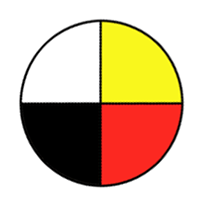Analyze the interdependence among plants, individuals, society, and the environment.
CP, DM, SI
| (a) |
Observe, safely and respectfully, plants in local environments (e.g., classroom, flower garden, school yard, community garden, forest, field, park, and nature preserve). |
| (b) |
Research traditional and contemporary uses of plants or parts of plants, such as food, beverages, medicine, arts, seed banks, shade, wind breaks, erosion protection, cultural celebrations, and products like dyes, shelter, and clothing. |
| (c) |
Examine the significance to some First Nations and Métis people of offering tobacco during harvesting and how that purpose differs from using the tobacco plant for smoking. |
| (d) |
Examine the importance of agriculture in Saskatchewan, including the variety of plants and plant-related products. |
| (e) |
Describe examples of plant biodiversity (e.g., trees, shrubs, bushes, herbs, grasses, vines, and mosses) in various ecosystems throughout the world. |
| (f) |
Explain how to determine whether plants are healthy and discuss the impacts of diseased plants on society and the environment. |
| (g) |
Describe ways that plants and animals depend on each other. |
| (h) |
Assess the impact of natural (e.g., animal migration, fire, competition, and decay) and human activity (e.g., burning land, logging, fertilizing, soil compaction, and picking endangered plants) on the biodiversity of plant species. |
| (i) |
Examine the type and quantity of plants and plant matter in the diets of people who live in various communities and/or represent various cultures. |
| (j) |
Explain how and why plants are replenished naturally (e.g., forest fires and pollination) and artificially (e.g., tree farms, planting seedlings, and seed banks). |
| (k) |
Defend a position related to plant use (e.g., picking plants, harvesting crops, fertilizing, and planting invasive species) and protection (e.g., establishing conservation areas, planting native species, and developing alternatives to plant-based products). |
| (l) |
Imagine a world without plants and describe the impact on animals, people, and the environment. |
| (m) |
Respond to and acknowledge the ideas of others regarding the importance of plants to self and society. |
| (n) |
Research lifestyles (e.g., farming, fishing, and logging) and jobs (e.g., florist, crop scientist, landscaper, gardener, fruit grower, ecologist, logger, and nursery worker) that depend on understanding and working with plants and plant-related products. |









A teacher's guide is available.










This book highlights the importance of looking ahead to and planning for what we leave our grandchildren and the generations to follow.





In the first section, Dr. Nadkarni introduces the humid forest floor. In the second section, Dr. Nadkarni prepares to climb towards the rain forest canopy. She discusses the climbers and clingers, gliders and how to get to the top of the canopy. At the top of the canopy, the tallest trees in the world emerge. There are treetop dwellers, a cloud forest and the types of research taking place in the rain forest.
Dr. Nadkarni also discusses human life in the rain forest and adaptations people have made to live in the environment.





















Wangari received the Nobel Peace Prize in 2004. At the back of the book is additional information on Wangari Maathai.


